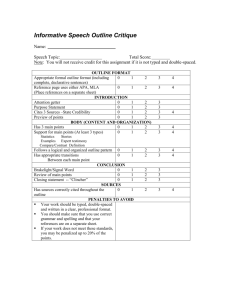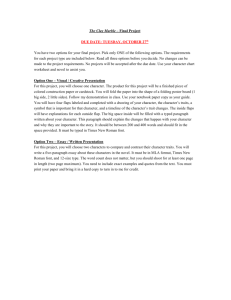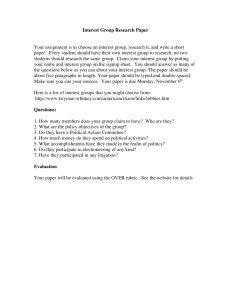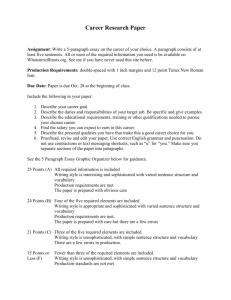Metea Valley High School 2010-2011
advertisement
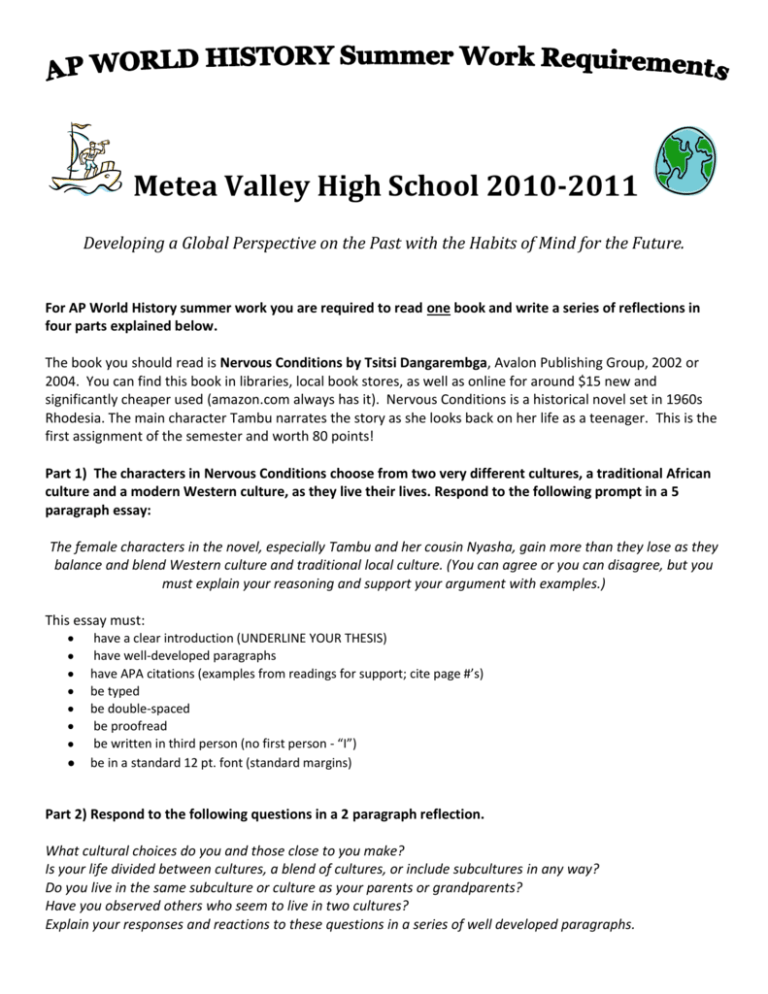
Metea Valley High School 2010-2011 Developing a Global Perspective on the Past with the Habits of Mind for the Future. For AP World History summer work you are required to read one book and write a series of reflections in four parts explained below. The book you should read is Nervous Conditions by Tsitsi Dangarembga, Avalon Publishing Group, 2002 or 2004. You can find this book in libraries, local book stores, as well as online for around $15 new and significantly cheaper used (amazon.com always has it). Nervous Conditions is a historical novel set in 1960s Rhodesia. The main character Tambu narrates the story as she looks back on her life as a teenager. This is the first assignment of the semester and worth 80 points! Part 1) The characters in Nervous Conditions choose from two very different cultures, a traditional African culture and a modern Western culture, as they live their lives. Respond to the following prompt in a 5 paragraph essay: The female characters in the novel, especially Tambu and her cousin Nyasha, gain more than they lose as they balance and blend Western culture and traditional local culture. (You can agree or you can disagree, but you must explain your reasoning and support your argument with examples.) This essay must: have a clear introduction (UNDERLINE YOUR THESIS) have well-developed paragraphs have APA citations (examples from readings for support; cite page #’s) be typed be double-spaced be proofread be written in third person (no first person - “I”) be in a standard 12 pt. font (standard margins) Part 2) Respond to the following questions in a 2 paragraph reflection. What cultural choices do you and those close to you make? Is your life divided between cultures, a blend of cultures, or include subcultures in any way? Do you live in the same subculture or culture as your parents or grandparents? Have you observed others who seem to live in two cultures? Explain your responses and reactions to these questions in a series of well developed paragraphs. ***This reflection should be 2 paragraphs in length, must be typed, double-spaced, proofread, and in a standard 12 pt. font with standard margins.*** Part 3) In one well developed paragraph, explain which of the following themes are most visible in the novel Nervous Conditions? (These 5 overarching themes will be used throughout the AP World History course.) 1. Interaction between humans and the environment (demography and disease; migration; patterns of civilization; technology) 2. Development and interaction of cultures (religions; belief systems, philosophies, and ideologies; science and technology; the arts and architecture) 3. State-building, expansion, and conflict (political structures and forms of governance; empires; nations and nationalism; revolts and revolutions; regional, transregional, and global structures and organizations) 4. Creation, expansion, and interaction of economic systems (agricultural and pastoral production; trade and commerce; labor systems; industrialization; capitalism and socialism) 5. Development and transformation of social structures (gender roles and relations; family and kinship; racial and ethnic constructions; social and economic classes) Part 4) What does Globalization mean? To answer this, complete the following: Find a definition of globalization and cite your source. Define globalization in your own words. Explain in a paragraph how the novel Nervous Conditions connects to globalization. ***Be sure your explanation contains elements of your cited definition and your definition. This section must be typed, double-spaced, proofread, and in a standard 12 pt font with standard margins.*** --------------------------------------------------------------------------------------------------------------------------------------- All summer work must be completed by the first day of class! No excuses! If you have any questions about the summer work, email the Metea Valley AP World History Teacher, Mrs. Squires, at amanda_squires@ipsd.org If you want to learn more about the AP World History class, see collegeboard.com and click on AP World History! This is a great place to see how AP World works and what you will be learning throughout the year!
